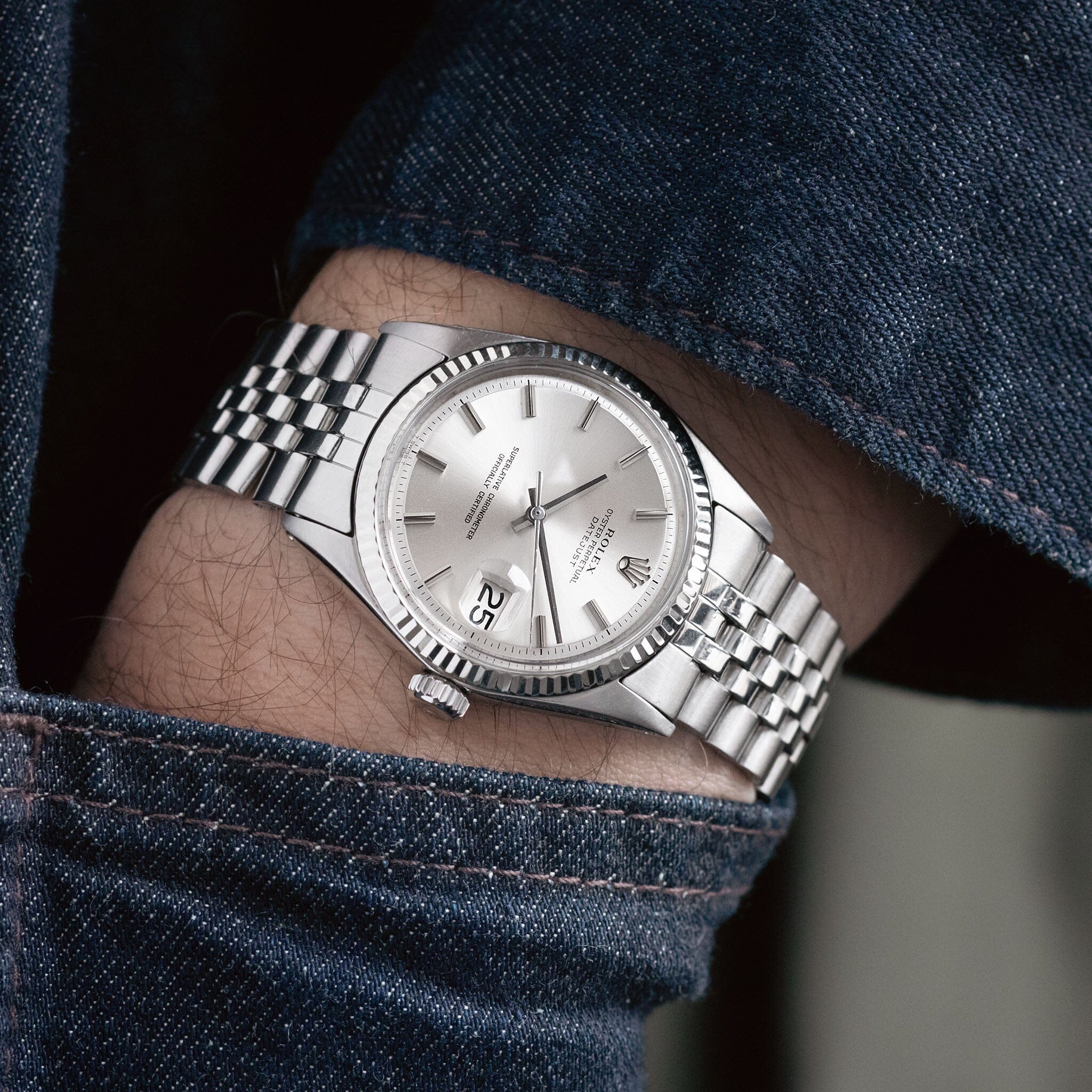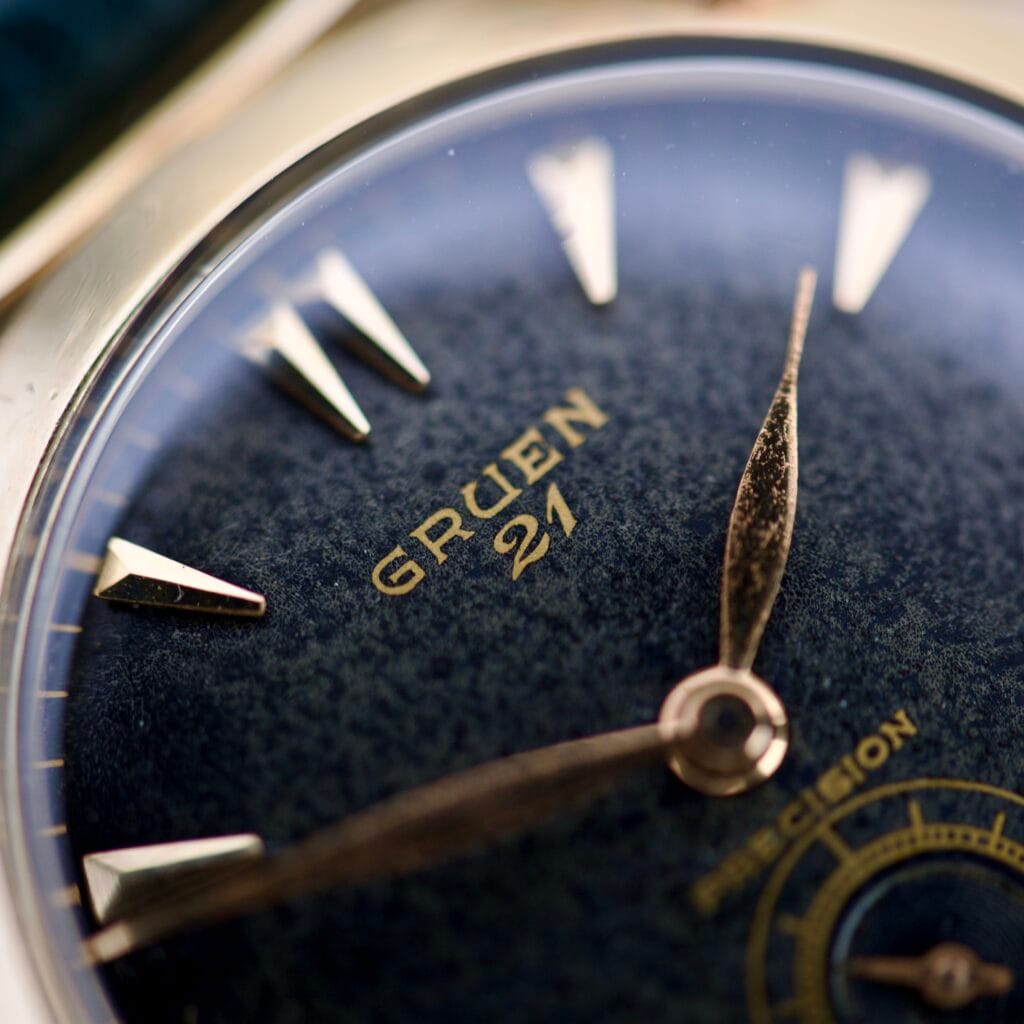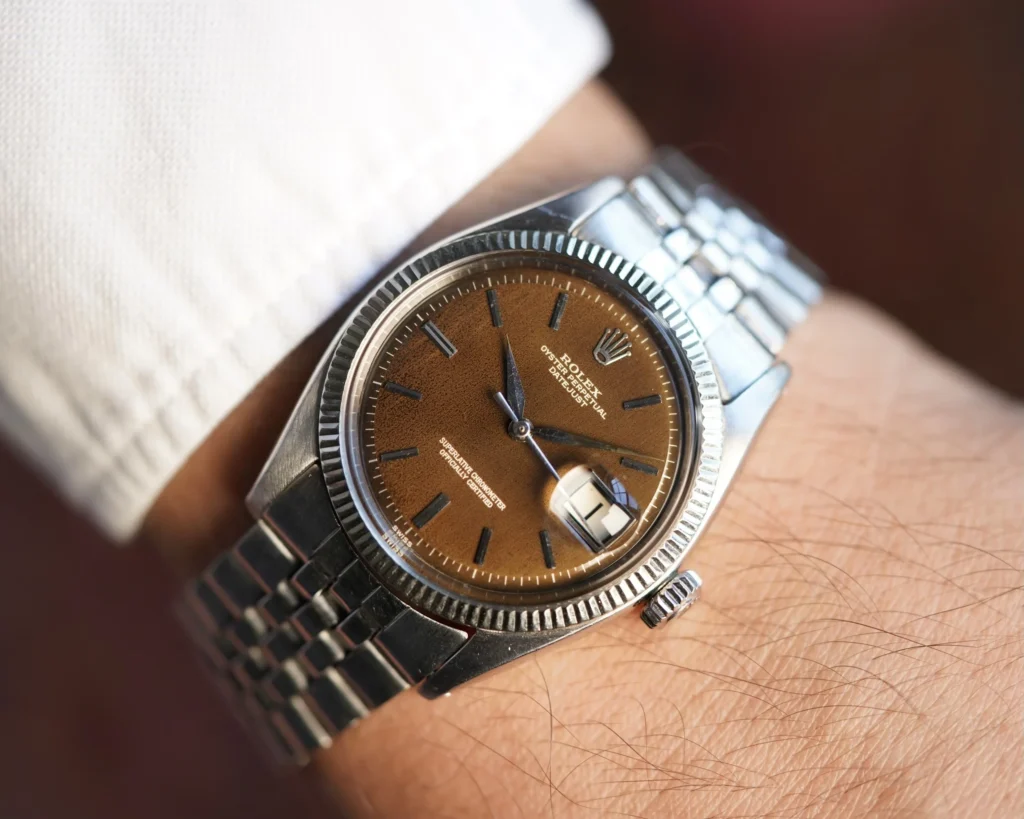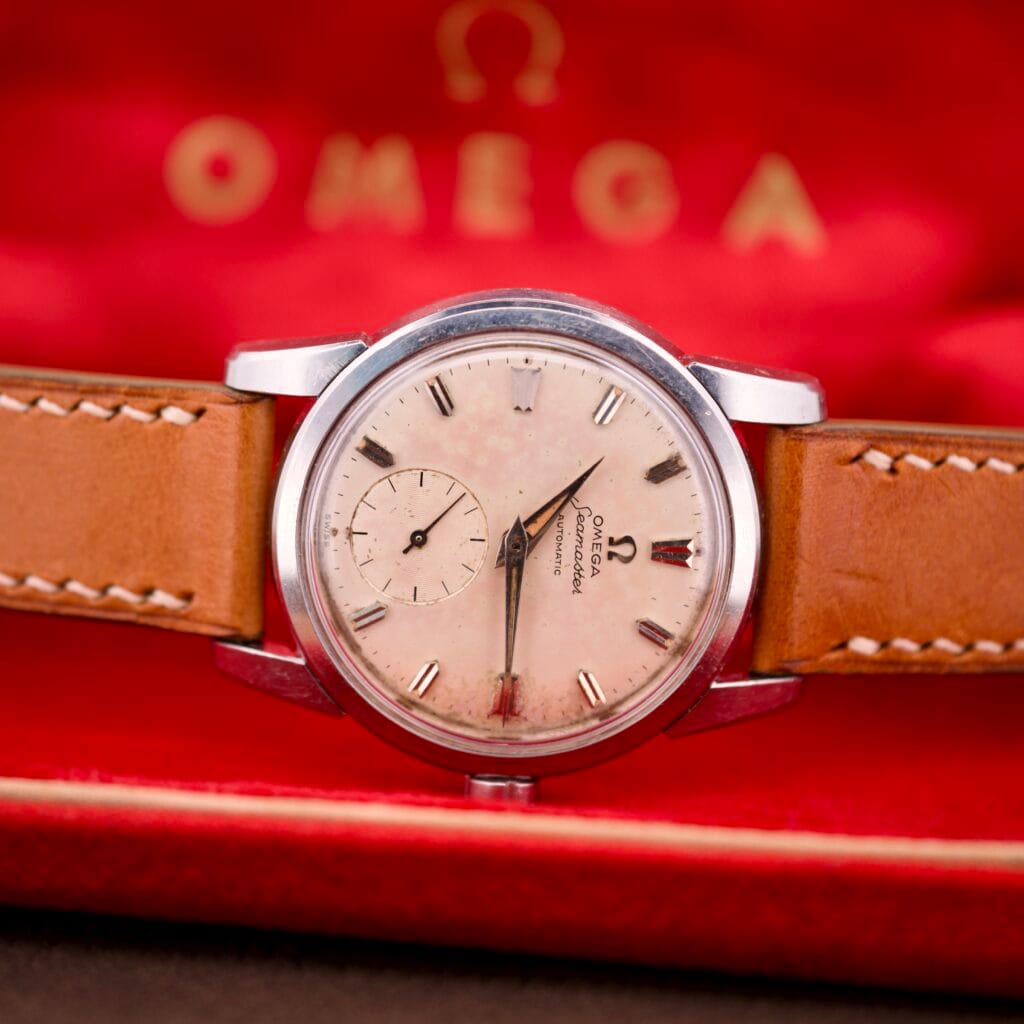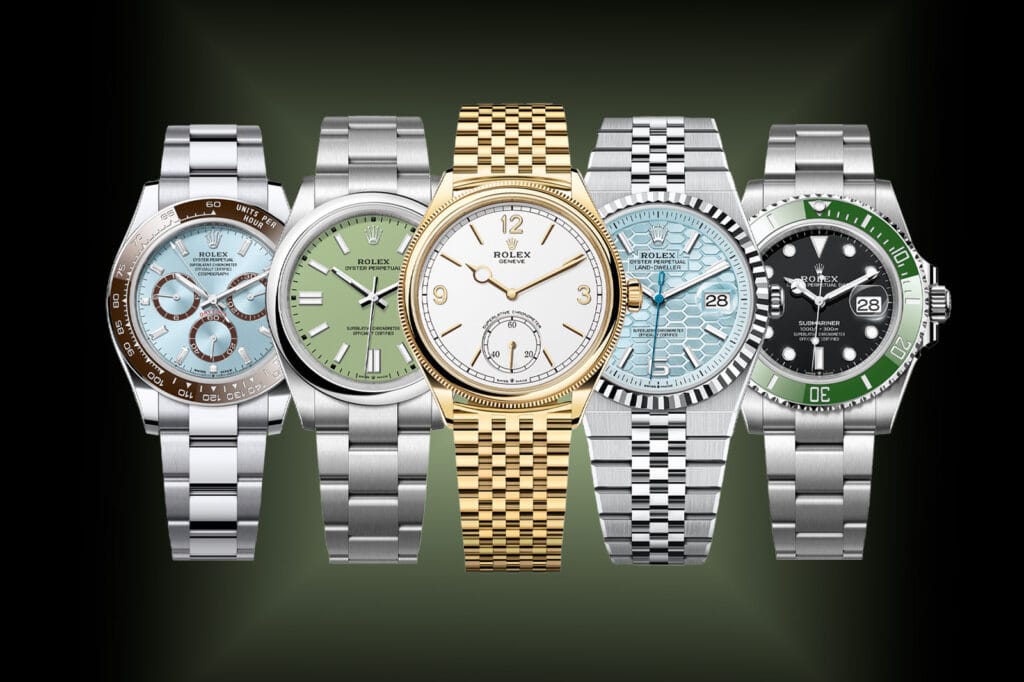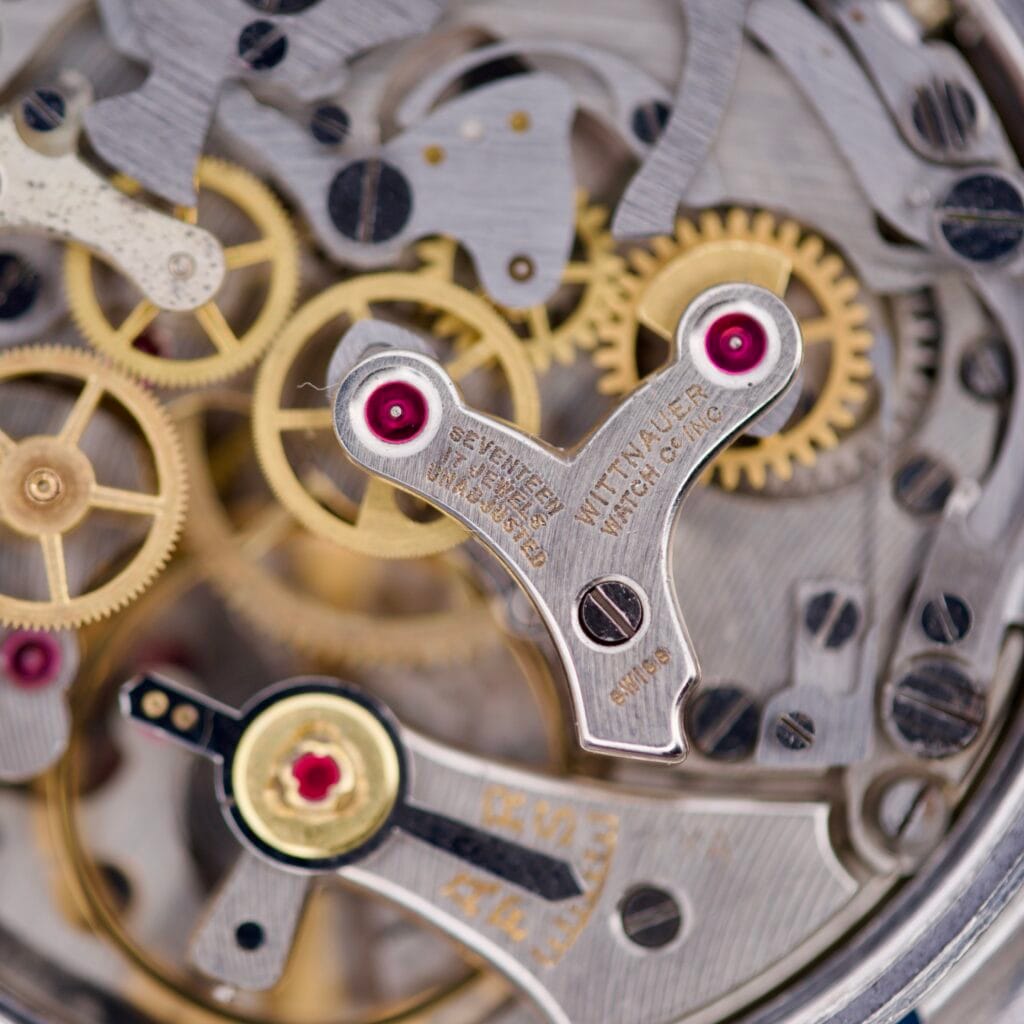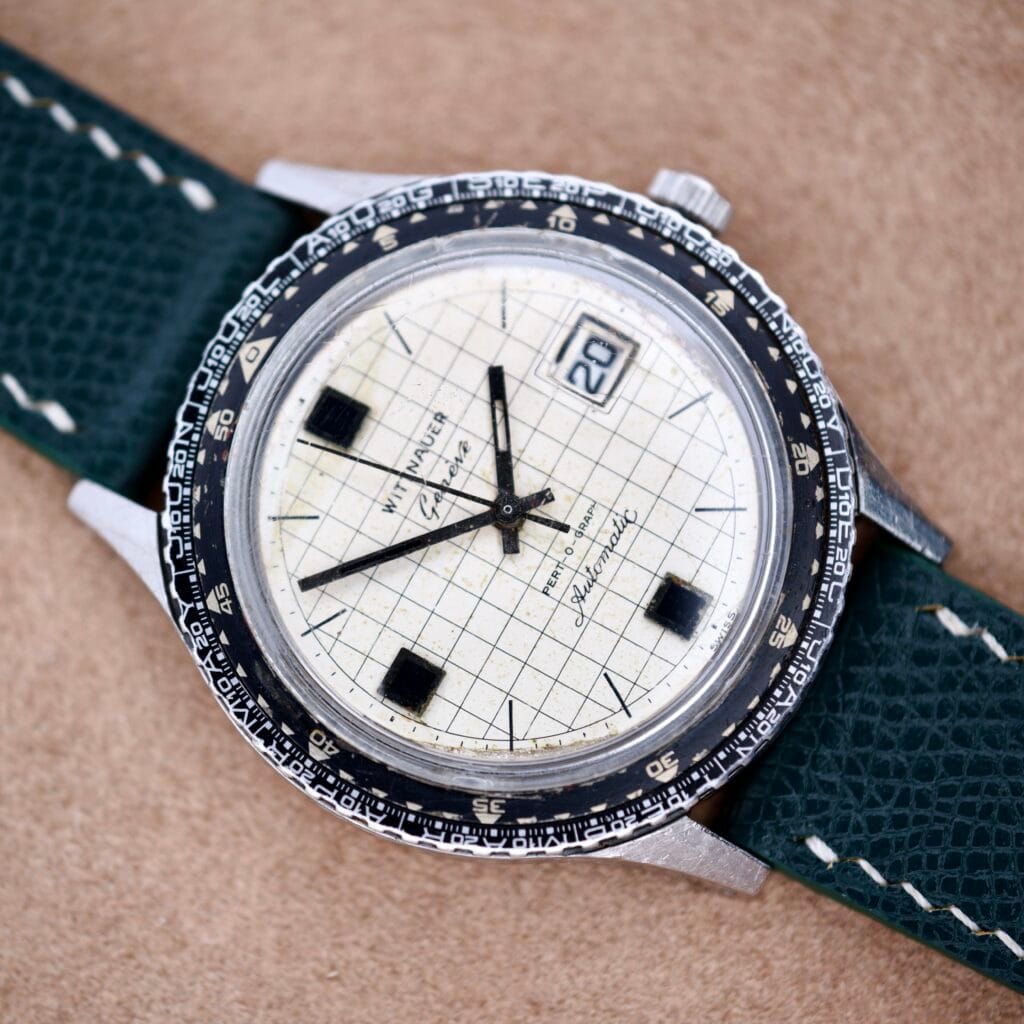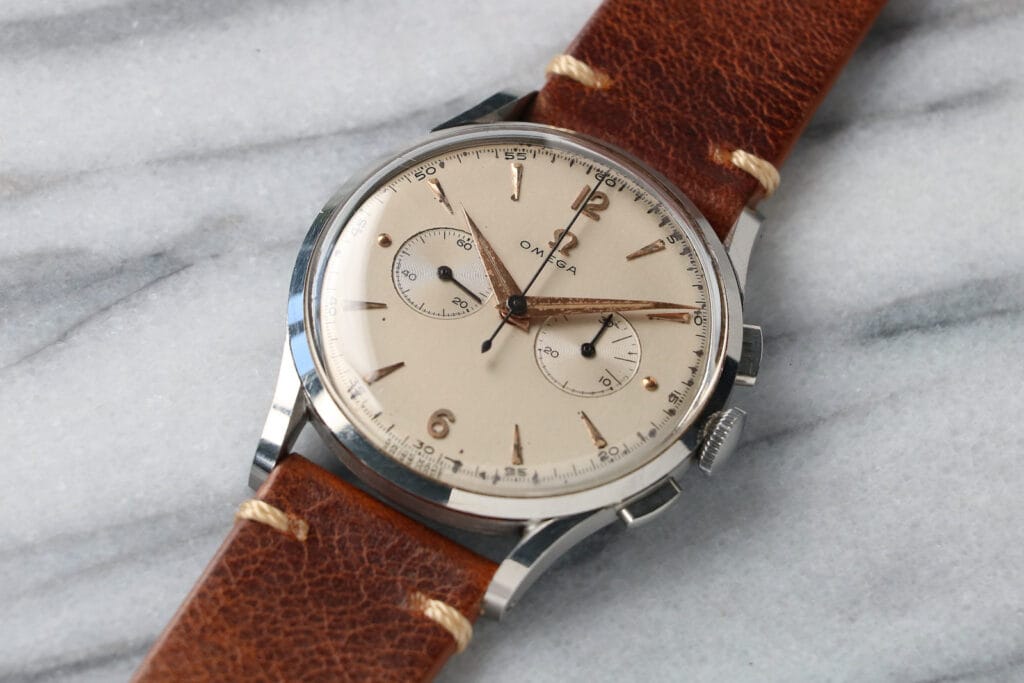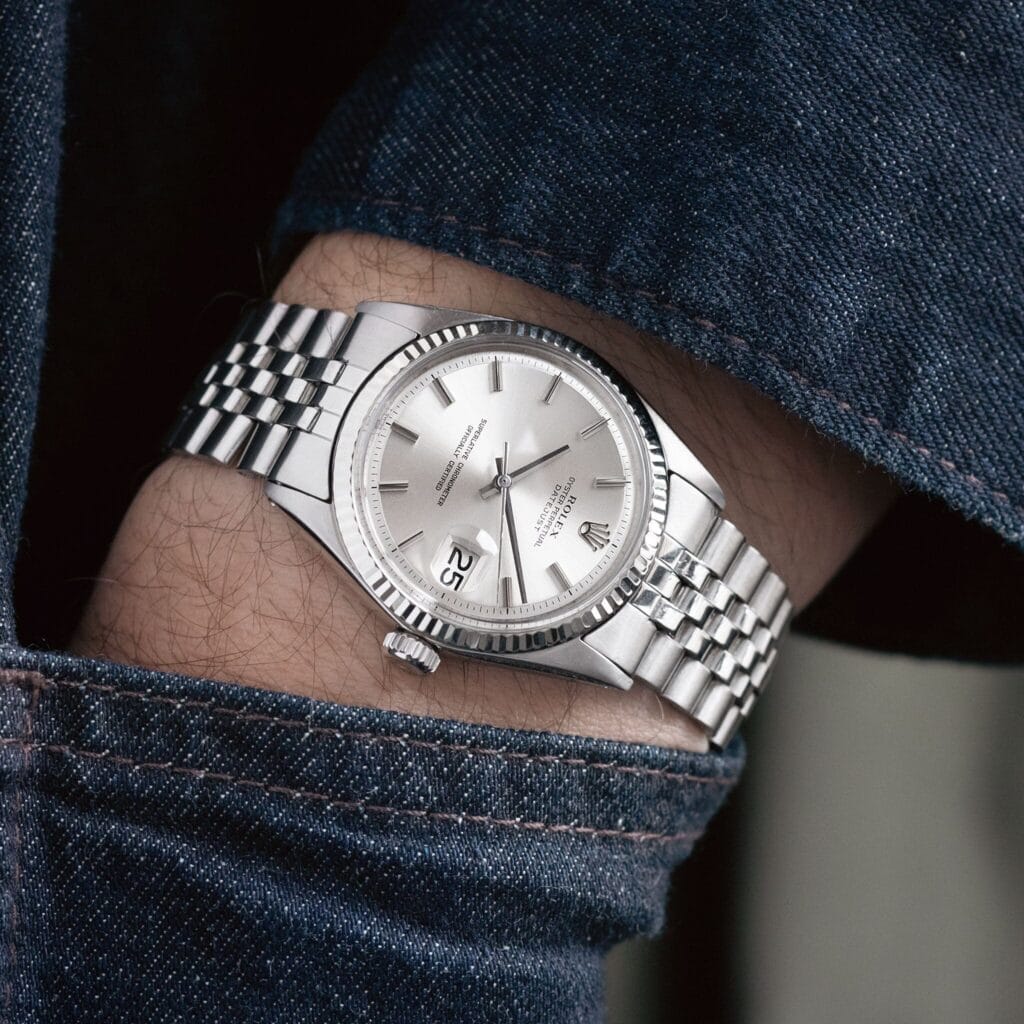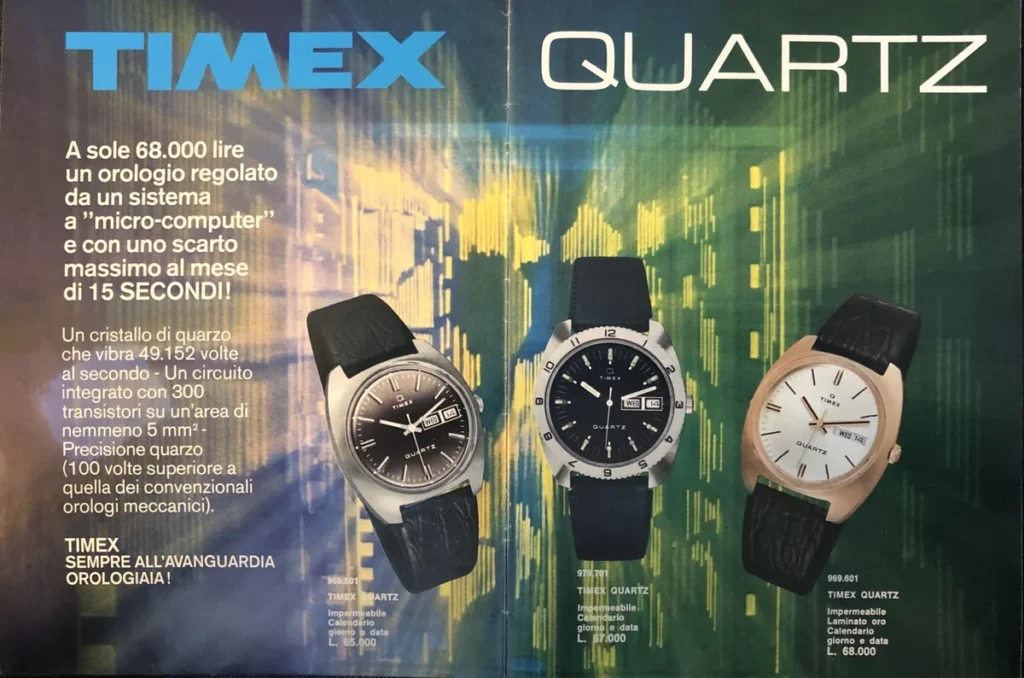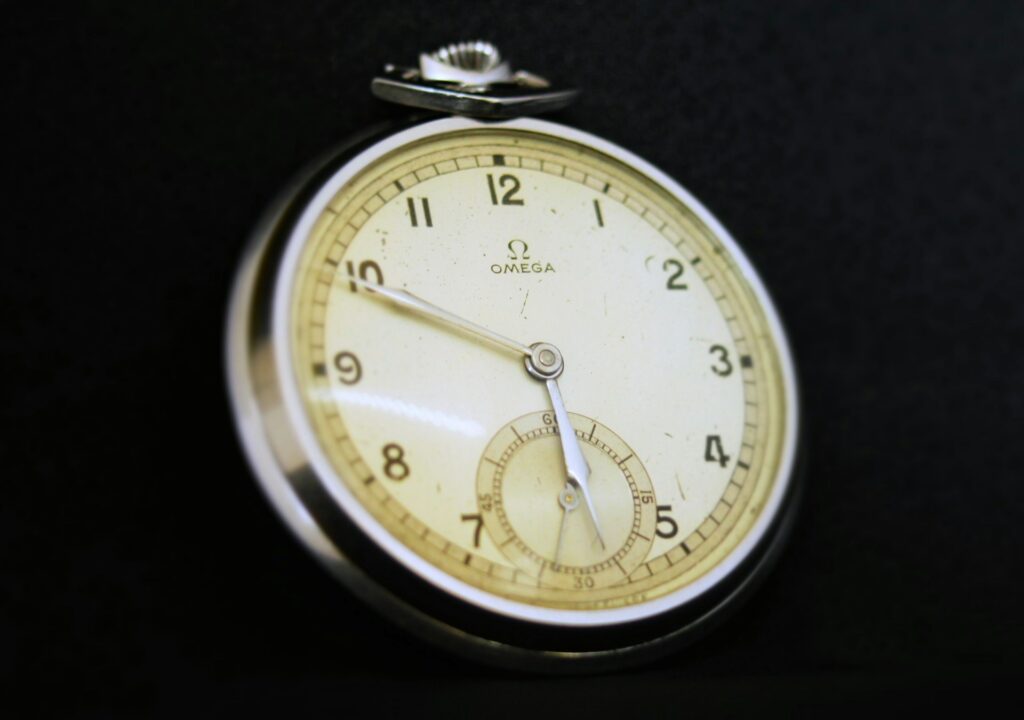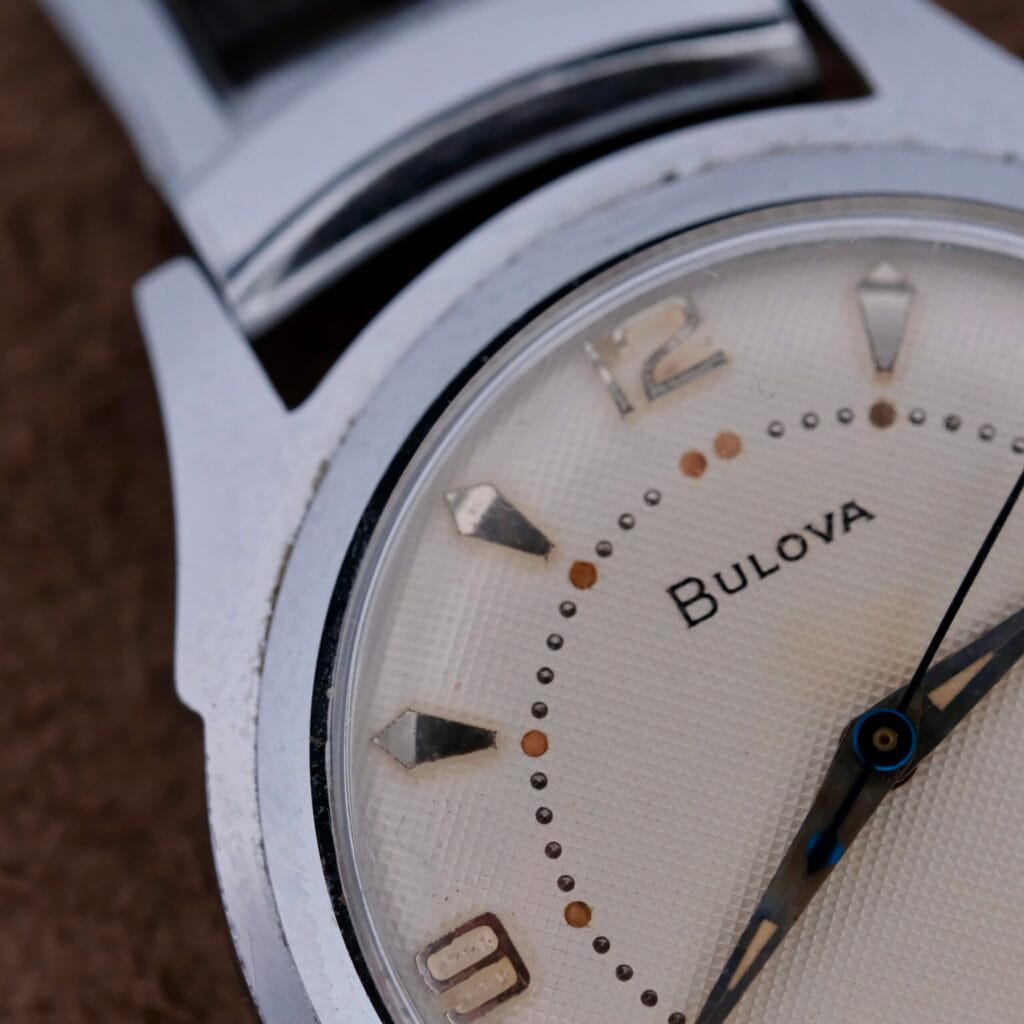Don't miss the next drop
In the grand pantheon of horology, few timepieces command the same blend of understated elegance, historical significance, and everyday versatility as the Rolex Datejust. And within that storied lineage, the Datejust 1601 stands as a monumental achievement—the model that arguably perfected the Datejust’s aesthetic formula and defined its identity for generations to come. Produced for nearly two decades, the 1601 is more than just a vintage watch; it is a cultural touchstone, an archetype of mid-20th-century design that remains as relevant today as it was at its debut.
History and Evolution of the Datejust 1601
Rolex Datejust 1601 Production Period: (1959-1977)
The Rolex Datejust 16xx series, including the flagship 1601, made its debut in 1959 and remained in production until the late 1970s, with some sources citing production into the early 1980s. This period marked a pivotal moment for the Datejust collection. Since its introduction in 1945, the Datejust had been in a state of constant evolution, but the 16xx generation was where the model truly came into its own, solidifying the design language that would define it for the next half-century.
One of the most significant advancements of the 16xx series was the introduction of the new, slimmer 1500-series of calibers. This technical innovation allowed Rolex to move away from the thick, bulbous “bubble back” casebacks that characterized the earlier 4xxx, 5xxx, and 6xxx generations. The result was a flatter, more elegant case profile that sat more comfortably on the wrist and established the sleek silhouette we associate with the Datejust today.
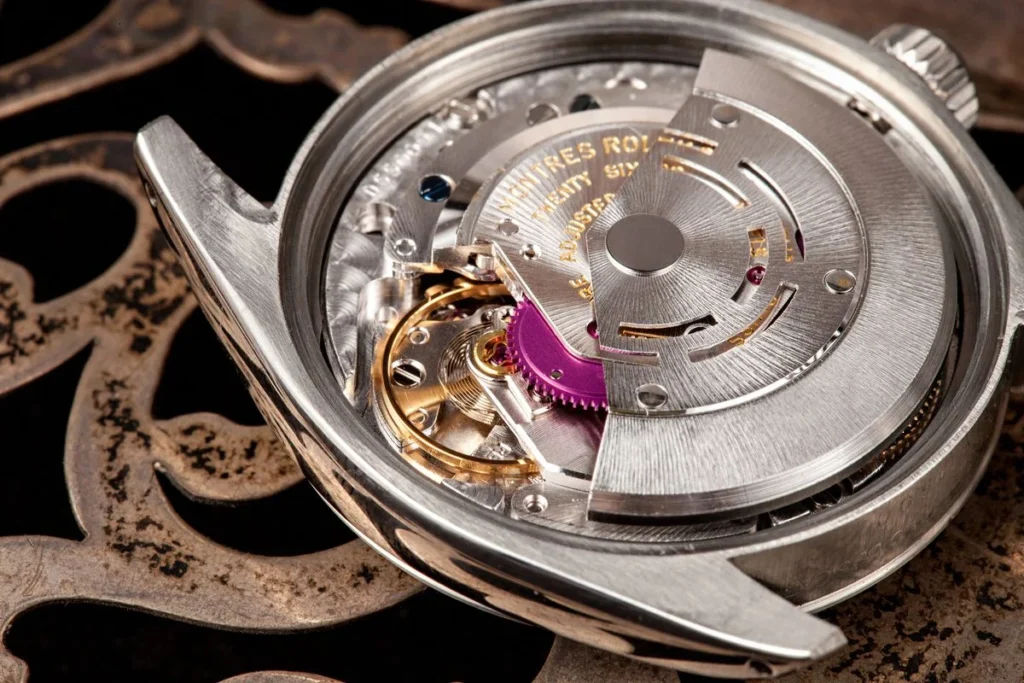
This refinement was not just technical but also aesthetic. Early Datejusts featured ornate elements like alpha hands and arrow-shaped hour markers. With the 1601, Rolex transitioned to the now-archetypal combination of simple baton hands and stick indices, creating a cleaner, more modern, and ultimately more timeless look. The Datejust 1601 represents the moment Rolex finalized the Datejust’s visual identity. While subsequent references like the 16014 and 16234 would introduce important technical upgrades such as a quickset date function and sapphire crystals, they retained the core aesthetic blueprint established by the Datejust 1601. In this sense, the 1601 is not just another reference; it is the design anchor for the entire modern Datejust family.
Anatomy of the Datejust 1601
Several key features define the vintage character of every Datejust 1601 and are essential for collectors to understand.
- Case: The watch is housed in the classic 36mm Rolex Oyster case, a dimension celebrated for its universal wearability and timeless proportions.
- Crystal: All 16xx references were fitted with an acrylic (Plexiglass) crystal. This material imparts a distinct warmth and a beautiful distortion at the edges that is highly prized by vintage enthusiasts and is absent in modern sapphire crystals. Affixed to the crystal is the iconic Cyclops lens, which magnifies the date display for improved legibility, a feature first introduced to the Datejust line in 1953.
- Luminosity: A crucial dating marker for collectors is the luminous material used on the dial and hands. Around 1963, Rolex transitioned from the radioactive material radium to the safer tritium. Dials from this period are often marked “T SWISS T” at the 6 o’clock position to signify this change.
The 16xx series was powered by the robust and reliable 1500 family of movements, which represented Rolex’s first truly in-house caliber series and marked a new era of performance and manufacturing prowess for the brand. These movements are a window into Rolex’s mid-century production philosophy, which prioritized efficiency, reliability, and modularity. Rather than designing unique movements for each model, Rolex engineered a superb base caliber and then added complications as needed—a date wheel for the Datejust, a 24-hour hand for the GMT-Master. This industrial strategy not only streamlined manufacturing but also ensured parts availability for servicing, contributing to the legendary longevity of these watches.
The Early Workhorse: Caliber 1565 (c. 1959-1965)
The initial production run of the Datejust 1601 was equipped with the Caliber 1565. This movement was a dependable workhorse with the following specifications:
- Frequency: 18,000 vibrations per hour (vph)
- Power Reserve: Approximately 42 hours
- Shock Protection: KIF shock absorption system
- Jewels: 26 jewels
The Refined Successor: Caliber 1575 (c. 1965-1977)
Around 1965, Rolex upgraded the Datejust to the Caliber 1575. This movement brought a key improvement:
- Frequency: A higher beat rate of 19,800 vph, which increased the movement’s stability and potential for accuracy.
A further significant update occurred around 1972, when Rolex added a “hacking” seconds function to the Caliber 1575 without changing the caliber designation. This feature, which stops the seconds hand when the crown is pulled out to the time-setting position, allows for precise synchronization with a reference time. The presence or absence of this function is a key marker for dating a Rolex Datejust 1601 from this transitional period.
A defining characteristic of the entire 16xx generation is its “non-quickset” date function. This means that to change the date, the owner must advance the hour and minute hands past midnight for each day. While the date change itself is instantaneous, a feature Rolex perfected in the mid-1950s, setting it after the watch has stopped for several days can be a time-consuming process. This is a crucial detail for any prospective buyer to understand, as it is a fundamental part of the vintage ownership experience. The quickset feature would not be introduced until the subsequent five-digit 160xx series in 1977.
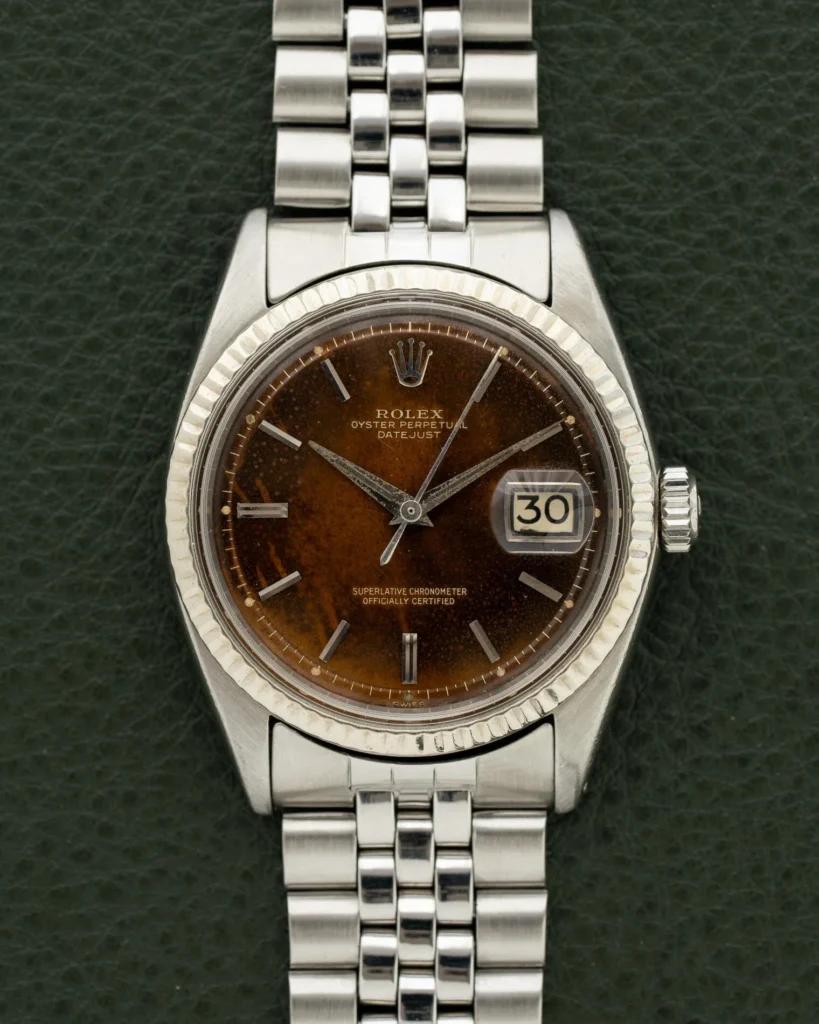
Decoding Movement Markings
Collectors opening a Datejust 1601 will often find the movement’s automatic winding bridge engraved with the number “1570” rather than “1575.” This is a common point of confusion but is entirely correct and expected. The Caliber 1570 was the base, no-date version of the movement. Rolex used the same engraved plates across the entire movement family, simply adding the date complication module to create the Caliber 1575. This efficient, modular approach is a testament to Rolex’s industrial ingenuity and should not be considered a red flag for authenticity.
Rolex Datejust 1601 Dial Variations
The true magic of the Rolex Datejust 1601, and the reason it inspires such fervent collecting, lies in its vast and stunning array of dial variations. The dial is not merely a face but a historical document, with its profile, texture, and markings telling stories of design trends, economic pressures, and global marketing strategies. Learning to read these subtle cues transforms the watch from a simple timepiece into a rich artifact.
The “Pie-Pan” Profile
The most emblematic feature of a 16xx series dial is its “pie-pan” shape. This design features a flat center section and a distinctly angled, downward-sloping outer edge, resembling an inverted pie pan. This profile adds a wonderful sense of depth and dimensionality to the watch, playing with light in a way that the completely flat dials of later references (from the 160xx series onward) do not. This feature is highly sought after by collectors for its vintage charm and is a key identifier of this golden era of Datejust production.
A Study in Texture – Beyond the Sunburst
While the standard silver and champagne sunburst dials are beautiful in their own right, the 1601 was also a canvas for some of Rolex’s most interesting and rare dial textures.
Linen Dials: These dials feature a delicate, cross-hatched texture that resembles fine linen fabric. The engraving catches the light beautifully, creating a subtle and sophisticated effect. Linen dials were available in several colors, most commonly silver and gray, and offer a touch of distinction without commanding the high premiums of other rare variants.
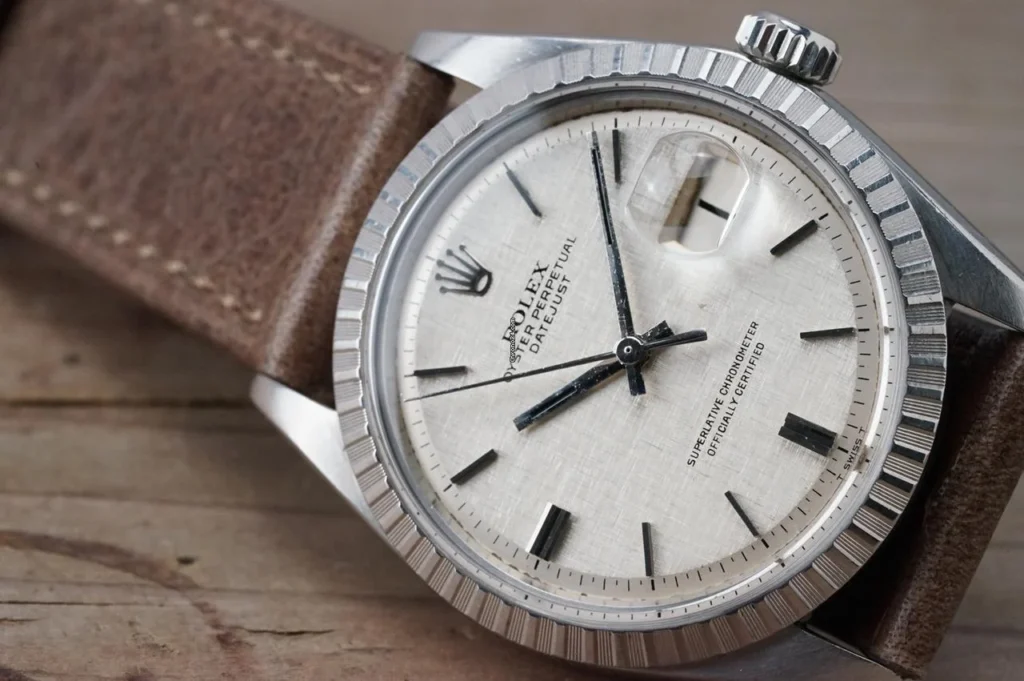
Shantung / Mosaic Dials: Among the rarest and most desirable dials for the 1601 are the “Shantung” or “Mosaic” dials. These dials are characterized by a unique, textured pattern that resembles woven silk, with fine horizontal lines creating a captivating visual effect. These dials were produced primarily for the Asian market in the early 1970s and are exceptionally rare to find today, representing a fascinating chapter in Rolex’s history of regional market customization. They can be found in colors like blue and are a true “grail” for many dedicated Datejust 1601 collectors.
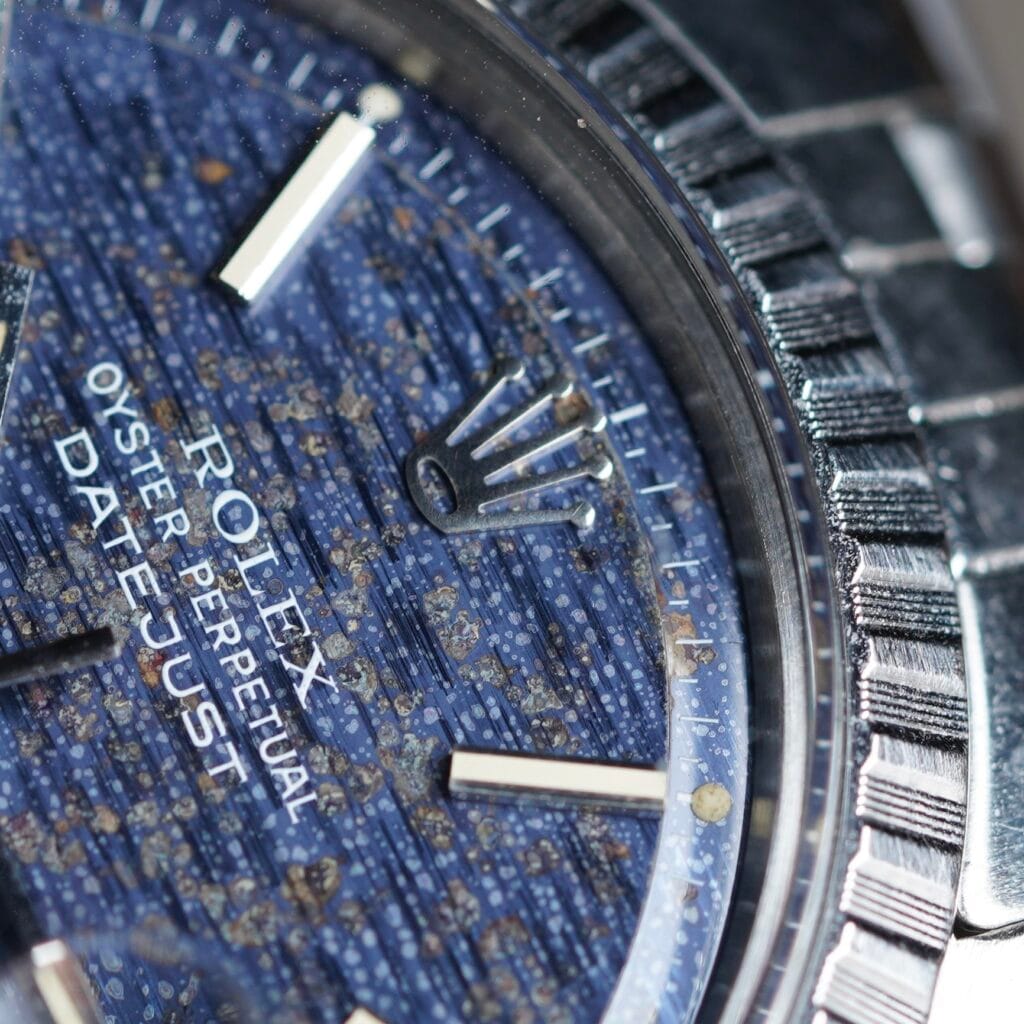
The “Sigma” Secret (c. 1970-1977)
In the 1970s, a small but significant detail appeared at the bottom of some Rolex dials: the lowercase Greek letter sigma (σ). A “Sigma dial” is marked “σ T SWISS T σ” at the 6 o’clock position. The “T”s denote the use of tritium lume, while the sigmas signify that the dial’s hour markers and hands are crafted from solid gold.
The appearance of the Sigma dial was not a random design choice but a direct response to a major historical event: the Quartz Crisis. As inexpensive, highly accurate quartz watches from Japan began to flood the market, the traditional Swiss mechanical watch industry faced an existential threat. In response, a consortium of Swiss watchmakers called the Association pour la Promotion Industrielle de l’Or (APRIOR) began using the sigma symbol to emphasize the intrinsic value and precious materials used in their watches, distinguishing them as luxury goods rather than mere time-telling appliances. A 1601 with a Sigma dial is therefore a physical artifact of this pivotal moment in watchmaking history, and as such, these dials command a significant price premium on the vintage market.
The Color Palette and Rare Variants
The Datejust 1601 was offered in a wide spectrum of colors. While silver and champagne are the most common, examples in black, blue, and gray are more sought-after. Particularly rare is the matte gray dial with white text, often nicknamed the “Ghost Dial” for the way the text can seem to disappear into the dial in certain lighting conditions. A “Ghost” dial, especially when combined with the “Sigma” marking, is one of the most collectible configurations for a steel 1601. Other notable variations include the “Buckley” dial, which features large, painted Roman numerals for a distinct and classic look.
Cases, Bezels, and Bracelets
The external components of the Rolex Datejust 1601 are just as varied and important as its dials and movements. The combination of case material, bezel style, and bracelet type defines the watch’s character and is crucial for proper identification and valuation.
The Rolex Datejust 1601 was offered in several distinct material combinations, each with its own unique appeal:
- Stainless Steel: The classic steel Datejust 1601 is always paired with a fluted bezel made from 18k white gold. This is a subtle but important detail that adds a touch of luxury to the otherwise utilitarian steel case.
- Two-Tone “Rolesor”: Rolex’s signature combination of steel and gold, known as Rolesor, was a popular choice for the 1601. It was available in both stainless steel & 18k yellow gold and the much rarer configuration of stainless steel & 18k rose gold.
- Solid Gold: For the ultimate expression of luxury, the 1601 was also produced in solid 18k yellow gold and, in very rare instances, solid 18k rose gold.
The Bezel Trinity: 1601 vs. 1600 vs. 1603
To fully understand the market for the Rolex Datejust 1601, it is essential to differentiate it from its two sibling references from the same era, the 1600 and 1603. These three models are technically identical, differing only in their bezel style. This distinction is the single most important factor in identifying them correctly.
| Reference Number | Bezel Style | Bezel Material | Defining Characteristic |
| 1601 | Fluted | 18k White, Yellow, or Rose Gold | The classic, dressy option with sharp, reflective facets. |
| 1600 | Smooth / Domed | Stainless Steel or Gold | The most understated and minimalist of the three. |
| 1603 | Engine-Turned | Typically Stainless Steel | A more industrial, textured look with fine, regular grooves. |
This table serves as a quick and unambiguous identification tool. The reference 1601 is defined by its precious metal fluted bezel, which gives it a more formal and brilliant appearance compared to the sportier engine-turned bezel of the 1603 or the clean, simple look of the 1600.
Period-Correct Bracelets: The Art of the Folded Link
The Datejust 1601 was typically offered on one of two iconic Rolex bracelets: the dressier five-piece link Jubilee or the sportier three-piece link Oyster. A defining feature of these vintage bracelets is their
folded link construction. Unlike modern solid-link bracelets, the links of these earlier versions were formed from sheets of folded metal.
This construction method is responsible for the bracelets’ characteristic lightness and the audible “jingle-jangle” that many collectors find charming. However, it is also the primary cause of “stretch.” Over decades of wear, the pins connecting the links can slowly wear down the folded metal, causing the bracelet to loosen and sag. The condition of the bracelet, and specifically the degree of stretch, is a critical factor in a vintage 1601’s value and wearability. Common period-correct Jubilee bracelets include the 6251H, often fitted with “55” end links for the 20mm lug width of the Datejust.
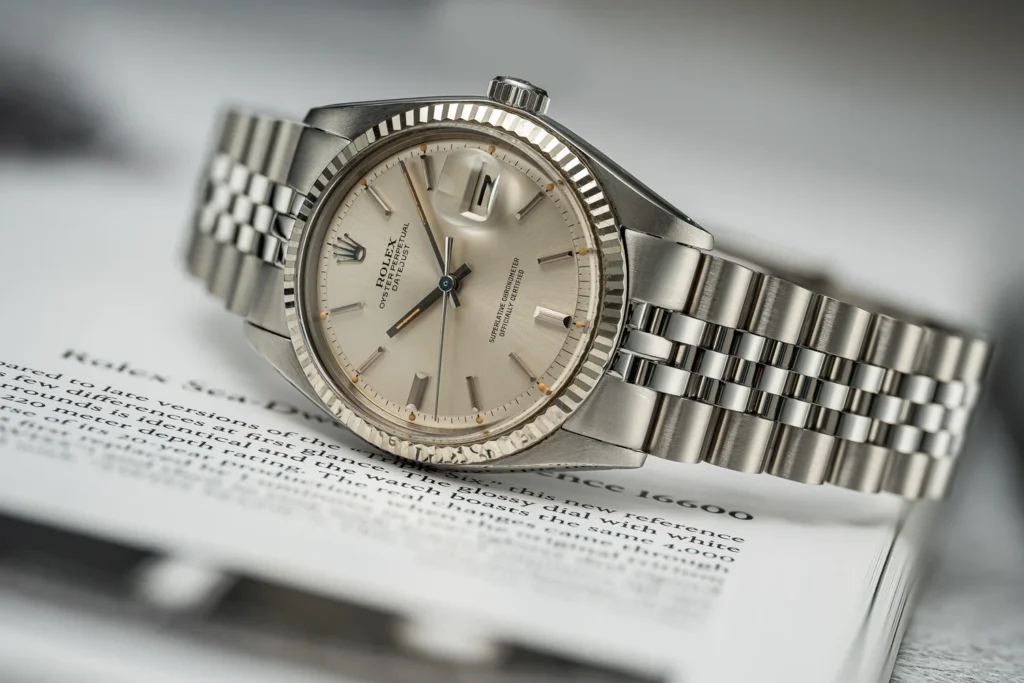
Value, Scarcity, and Buying Advice
Navigating the market for a Rolex Datejust 1601 requires a nuanced understanding of the factors that drive its value. It is a unique reference that occupies two distinct market tiers simultaneously: it is both one of the most accessible entry points into vintage Rolex ownership and a source of rare, highly appreciating assets.
As of 2025, the market for the Rolex Datejust 1601 can be broken down into several tiers, heavily dependent on material, dial configuration, and overall condition.
- Entry-Level (approx. $3,000 – $4,000): This range typically includes “head-only” examples (without a bracelet) in stainless steel with common silver or champagne dials. These watches offer an incredible value proposition for entering the Rolex world.
- Mid-Range (approx. $4,500 – $6,000): In this bracket, a collector can expect to find good-condition examples in steel or two-tone, often with an original bracelet in decent condition and potentially a more desirable dial, such as a black or linen dial.
- High-End (approx. $6,500 and up): This tier is reserved for the most collectible examples. This includes watches in exceptional, unpolished condition with a full set of original box and papers, models with rare dials like a gray “Ghost” or “Sigma” dial, and examples in solid gold. Prices for the rarest configurations can easily exceed $10,000.
When assessing a Rolex 1601, value is determined by a clear hierarchy of factors.
- Condition & Originality: This is the most important factor. A case that is unpolished, with thick, sharp lugs, is far more valuable than one that has been heavily polished and lost its original lines. The dial must be original and clean; a refinished or relumed dial significantly diminishes a watch’s value to serious collectors.
- Dial Rarity: As discussed, the dial is a primary value driver. A rare dial, such as a Shantung, a gray Ghost, or a Sigma dial, can add a premium of 50% or more to the price of an otherwise identical watch.
- Provenance (Box & Papers): The presence of the original box and, more importantly, the original punched warranty papers, is highly desirable. A “full set” provides a complete historical package and a strong guarantee of authenticity, often adding $1,000 or more to the watch’s value.
- Bracelet Condition: The state of the original bracelet is crucial. A tight, period-correct Jubilee or Oyster bracelet with minimal stretch can be worth over $1,000 on its own. Conversely, a heavily stretched and worn bracelet is a significant value detractor.
- Material: The base material follows a natural value progression. Stainless steel models are the most accessible, followed by two-tone Rolesor, with solid gold examples being the most valuable.
The Two-Tier Market Position of the 1601
The Rolex 1601’s market behavior can seem contradictory. Some experts correctly note that due to its long production run and the high number of units made, a standard Datejust is not a top-tier investment piece in the same vein as a vintage Submariner or Daytona. For the common silver-dialed steel variants, this holds true; they are stable, accessible classics rather than high-growth assets.
However, this view overlooks the second tier of the 1601 market. Within that mass production, Rolex created a vast number of dial, material, and bezel combinations, some of which were produced in very small quantities. The collector’s market is driven by rarity. Consequently, these specific, scarce configurations—a solid rose gold model, a blue “Shantung” dial, or a gray “Sigma Ghost” dial—are hunted by discerning collectors and trade at significant premiums, behaving much more like rare, collectible references.
This creates a unique two-tier market within a single reference number. The Rolex 1601 is simultaneously the perfect, affordable entry point for a new enthusiast and a deep, rewarding, and potentially lucrative field of play for the advanced collector. Its value is not monolithic; it is a spectrum defined by the knowledge and discernment of the buyer.
Conclusion: The Enduring Allure of the Everyman Icon
The Rolex Datejust 1601 holds a unique and unassailable position in the world of vintage watches. It is a timepiece of beautiful contradictions: simple in its timeless design, yet complex in its countless variations; ubiquitous in its popularity, yet rare in its most sought-after forms. It represents the moment Rolex perfected a formula for enduring elegance, creating a watch that has transcended its era to become a universal symbol of style and quality.
For the collector, the 1601 offers a journey tailored to their ambition. It can be the first step into a lifelong passion, an accessible piece of horological history that offers the full Rolex ownership experience. Or, it can be an endless treasure hunt, a quest for the rare dial or unique configuration that tells a deeper story about a pivotal moment in time. It is this remarkable duality—the blend of robust, tool-watch heritage with its destiny as a luxury icon—that secures the legacy of the Datejust 1601. It is, and will likely always remain, the perfect vintage watch.
Related posts
The Rise and Fall of American Watchmaking: A Complete History
American watch manufacturing once dominated global timekeeping, pioneering mass production techniques that revolutionized industry worl...
The Evolution of the Rolex Datejust: 1945-1990
The Rolex Datejust revolutionized wristwatches in 1945 as the world's first self-winding waterproof chronometer with an automatically c...
The Ultimate Guide to Vintage Omega Seamasters
Vintage Omega Seamasters represent one of the most compelling propositions in watch collecting today - offering military provenanc...
The Expert’s Guide to Rolex Serial Numbers and Reference Numbers
Understanding Rolex serial numbers is essential for any Rolex enthusiast, collector, or potential buyer. These unique identif...
The Collector’s Guide to Vintage Wittnauer Chronographs
Vintage Wittnauer chronographs represent one of the most compelling value propositions in the world of mid-century timepieces. While br...
Wittnauer Pert-o-Graph Ref. 7005: An Analog Computer for the Project Manager’s Wrist
Wittnauer Pert-o-graph, tool watch or something else? In the history of horology, the "tool watch" has traditionally been defined by it...
The Expert’s Guide to Buying Vintage Watches on eBay In 2025
eBay, to the aspiring watch collector, is a landscape of profound contradiction. It is a digital bazaar of immense scale, a place where...
Complete Guide to the Rolex Datejust 1601
In the grand pantheon of horology, few timepieces command the same blend of understated elegance, historical significance, and everyday...
How the Quartz Crisis Nearly Ended Swiss Watchmaking
Before the quartz crisis (1970s), the Swiss watchmaking industry stood as an unshakeable colossus, a global symbol of precision, intric...
An Expert’s Guide to Omega Reference Numbers
Omega's rich horological history, stretching back to 1848, has produced an astonishingly diverse and extensive catalogue of timepieces....
Patina vs. Damage on a Watch Dial
Among vintage watch enthusiasts and collectors, one of the most debated topics revolves around patina and damage. What sets the two apa...
How Old Is My Bulova Watch? Production Date Guide
Bulova, one of the first companies to mass-produce wristwatches in the early 20th century, has made it easier than most to identify the...

